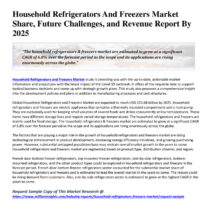Global warming represents one of the most consequential challenges of our time, prompting governments across the globe to devise and implement a myriad of strategies. This multifaceted approach includes legislation, international treaties, renewable energy investments, climate adaptation measures, and public awareness campaigns. The following sections outline some of the major strategies employed by governments to combat this pressing issue.
Legislation and Regulatory Frameworks
Many governments have enacted environmental laws aimed at reducing greenhouse gas emissions. These pieces of legislation often include emission caps for industries, mandates for cleaner fuels, and penalties for non-compliance. For instance, the European Union’s Emissions Trading System (ETS) acts as a cap-and-trade program, allowing companies to buy and sell emission allowances, thereby incentivizing reductions where they are most economically feasible.
Moreover, regulations often extend to transportation sectors, with mandates for fuel efficiency standards in automobiles and incentives for electric vehicle production. In many jurisdictions, the implementation of stringent building codes reinforces energy efficiency in new constructions, fostering a culture of sustainability.
International Treaties and Agreements
Global warming is a transnational issue, making international cooperation imperative. The Paris Agreement, adopted in 2015, exemplifies a pivotal step in uniting countries to limit global temperature rise. Under this accord, participating nations commit to setting nationally determined contributions (NDCs), outlining their individual plans to mitigate climate change. The nature of this agreement encourages nations to regularly enhance their commitments based on evolving scientific evidence and technological advancements.
Furthermore, initiatives like the Kyoto Protocol have laid the groundwork for legally binding commitments to reduce emissions, particularly for developed nations. These treaties reflect the understanding that a collaborative effort is essential for substantial progress against global warming.
Investments in Renewable Energy
Transitioning from fossil fuels to renewable energy sources is a cornerstone of many government strategies. Investments in wind, solar, hydroelectric, and geothermal energy are becoming more prevalent. Governments are increasingly providing subsidies and tax incentives to encourage clean energy projects, recognizing their potential to significantly lower carbon emissions.
Countries like Germany have embraced the “Energiewende” initiative, aiming for a comprehensive shift toward renewable energy. This initiative not only integrates clean energy into the national grid but also actively dismantles reliance on nuclear and coal power. Large-scale solar farms and wind turbine installations have become emblematic of the global shift toward sustainable energy sources.
Climate Adaptation and Resilience Planning
While mitigation is crucial, adaptation policies are equally essential. Governments increasingly recognize the need to prepare for the impacts of climate change through effective resilience planning. This includes investing in infrastructure capable of withstanding extreme weather events, such as flooding, hurricanes, and droughts. Coastal cities, for instance, are implementing flood defenses and enhancing drainage systems to mitigate the effects of rising sea levels.
Moreover, agriculture is being reshaped by governments through the adoption of sustainable farming practices, which enhance food security while addressing climate change resilience. Crop diversification, efficient irrigation, and soil health management are being promoted to ensure that food systems can withstand the vicissitudes of climate impacts.
Innovative Technology and Research
Investment in research and development is crucial for uncovering new technologies to combat global warming. Governments are increasingly funding initiatives focused on carbon capture and storage (CCS) technologies. CCS captures carbon dioxide emissions produced from the use of fossil fuels in electricity generation and stores it underground, preventing it from entering the atmosphere.
Moreover, innovative approaches such as geoengineering—deliberate manipulation of Earth’s climate systems—are being explored, albeit with caution due to ethical and ecological concerns. Research into sustainable battery technologies is also essential to support the shift toward electric vehicles and enhance the efficiency of renewable energy sources.
Public Engagement and Awareness Campaigns
Understanding and combating global warming requires active participation from the public. Governments have a vital role to play in fostering awareness and educating citizens about the impacts of climate change. Public campaigns often focus on promoting energy conservation, recycling, and sustainable lifestyle choices.
Community engagement initiatives, such as tree planting events or local clean-up campaigns, encourage citizen participation and bolster communal ties toward shared environmental goals. Moreover, as various entities—from schools to local organizations—commit to sustainability, a cultural shift towards ecological mindfulness is fostered.
Conclusion
Combating global warming necessitates a blend of legislative action, international cooperation, technological advancement, and public engagement. Governments worldwide, understanding the gravity of this issue, are taking an array of measures to protect the environment and promote sustainable practices. Only through collective action—spanning local communities to global coalitions—can significant strides be made in more effectively addressing and mitigating the dire consequences of climate change.







